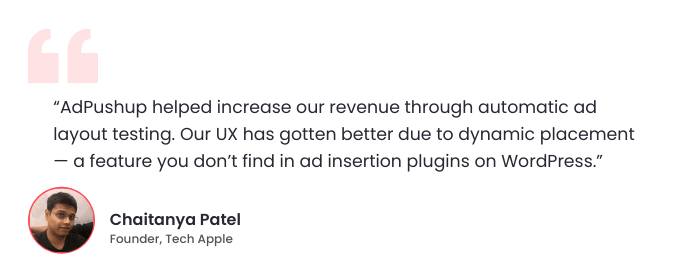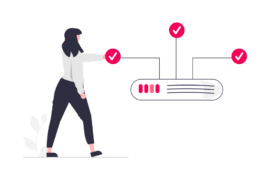It seems like everyone who has access to the internet nowadays also has a blog. Aside from the millions of WordPress blogs, lots of people are using one or more of the free blogging platforms – Blogger.com, Tumblr, Squidoo, Weebly, LiveJournal, etc. The question is, with all this competition how do you make sure your voice is heard? This is where increasing engagement comes in.
Only a tiny percentage of all the blogs out there have regular readers. In some cases this is because the blogger only makes one or two posts and then abandons the project. Yet even people who lovingly and diligently blog their hearts out often have trouble engaging with their audience. This is true whether their blogs are personal or designed to make money. What, then, is the key to getting people to interact more with your blog?
Defining and Measuring Engagement

Before we talk about how to engage with your readers it’s important to understand exactly what engagement is. You also have to know how to measure it. Otherwise, you are just blogging in a void without any notion of the impact you’re having. There are a few crucial metrics that you can use to get an idea of how successful you are in this area.
Traffic -This is the most obvious one. Without traffic, you don’t have anyone to engage with in the first place! On the other hand, traffic by itself doesn’t necessarily mean you are truly connecting with your readers. You can buy traffic or “hits” in bulk that is meaningless because people are only visiting your site in exchange for some reward -or, if it’s a traffic exchange, because they want you to visit their site.
Paid advertising, when not properly targeted, can also result in large amounts of mostly worthless traffic. This often occurs when the advertiser places an enticing but misleading or irrelevant ad. Many Google advertisers fall into this trap.
What you want is not only traffic, but the right kind. Targeted visitors who are going to spend some time on your site and return on a regular basis. Nevertheless, it’s important to know how much traffic you’re getting overall. That is, however, just the starting point.
Visitor Behavior -This has to do with how long visitors spend on your page and what they do. If people are only spending a couple of seconds on your site, you are obviously not engaging them. You may also find that they check out certain pages, but not others.
If you have a call to action on your blog – Such as capturing email addresses – you will be especially concerned with how visitors respond to this. That’s why it’s essential to use a tool such as Google Analytics or an alternative on your site. You can even integrate this with many free blogging platforms such as Weebly.
Feedback -Another way to gauge the level of engagement on your blog is the amount of feedback you get. Comments, questions and even complaints are proof that people are reading your blog and taking the time to respond.
As we have seen, there are several ways to define and measure engagement. The type of response you want will depend to some extent on your goals and the type of blog you have. If you are mainly trying to build a mailing list, for example, your primary focus will be getting people to visit and fill in your opt-in form.
If, however, you are trying to build more of a community around your blog you will be more concerned with getting more comments. Let’s look at some ways to improve engagement on any type of blog.
Content: Quality + Quantity
Content is the foundation of your blog. If you aren’t getting the kind of reader response you want, you should reconsider what you are publishing and how often.
There is no single, perfect formula for creating content for a blog. Some bloggers adhere to a rigid schedule of publishing every single day, or at least 5 days per week. Others prefer to write longer, more detailed posts less frequently.
For example, consider this strategy used by Jason Acidre, CEO of Xight Interactive:
“These past 2 years of blogging, I focused more on creating comprehensive, in-depth and actionable blog posts. And instead of writing twice to thrice a week, I just required myself to at least publish one post a week (but I ensure that the post will be very valuable and will benefit my blog’s long-term goals). The great thing about focusing on writing lengthier content is that it’s sticky to readers, more often than not. People tend to bookmark the post and share it on social networks when it appears to them as the ultimate resource about the subject.”
I would add to this comment that search engines also tend to prefer longer articles, so this gives you a better chance of getting your posts indexed.
Whether you choose to create shorter posts more frequently or longer ones less often, it’s critical that you publish regularly to your blog. One of the biggest mistakes bloggers make is to only post occasionally. There is no way you can hope to build any type of relationship with your readers unless you blog consistently.
There is also the issue of what kind of content you publish. As the above quote from Jason Acidre illustrates, it’s best if you create blog posts that carry some authority so people will want to share them. At the same time, you don’t have to feel like every blog post must be a brilliant treatise on a topic. It’s also good to mix it up a little. Here are some ideas to keep in mind when blogging:
- Use Images and Video – These are always good for grabbing people’s attention and also for giving them a break from text.
- Tell Stories -This is one of the best ways to engage readers. Don’t be afraid to insert some of your own personality into the post. Tell people your own experiences regarding a certain issue.
- Pick Trendy Topics -Check out Yahoo! Answers (and other answer sites), Google Trends, Google News and other sites that give you clues about what’s trending and popular. You might also head over to Amazon and see what books in your niche are currently bestsellers.
- Write in a Conversational Style –You want your blog posts to be easy and fun to read. Even if you’re writing on a technical subject, you want to make the content as engaging as possible.
Design and Layout

When someone visits your blog, the first thing he or she will notice is the way it looks. Think about how you react to different websites. Before you read a single word, the overall look of the site makes an impression on you. Some sites turn you off instantly. Others you find appealing for one reason or another. You are far more likely to explore these sites at length. Most are probably somewhere in between.
If people are not spending much time on your blog, the design is one of the first things to look at. After all, if they are leaving after 2 seconds, it can’t be the content, as no one reads that fast! Before you can get them to even start reading, you have to make them feel comfortable on your site.
You don’t have to be an expert designer. You could always hire a designer, but blogs for the most part should be simple and straightforward. In fact, complicated design can be a drawback if it makes it harder to see everything or causes the pages to load slowly. For these reasons, I’d suggest focusing less on creating a site that’s stunning or overly impressive than on one that’s clean and easy to navigate.
Have Plenty of White Space – When it comes to the visual aspect of your blog, one of the most important elements is white space. Long blocks of text are too challenging for most readers, especially in this age of Twitter, YouTube and Facebook status updates. That’s why you should limit your paragraphs to a reasonable length.
As I mentioned in the section on content, images and videos can be used to provide some variety. Even when people don’t take the time to watch the video, it gives their eyes a break from the text.
Avoid Clutter – If your site is full of ads, banners, pop-ups and other distracting features it will be hard for the visitor to focus on your content. Even when it comes to otherwise appealing items such as images, overdoing it will have a harmful effect on your blog’s appearance.
Colors and Fonts – Have you ever visited a blog or website that has lots of bright colors so that it was hard to read the text? This is one of the fastest ways to lose readers before you get a chance to engage them. Use conventional fonts and make the font size at least 12 point. Any smaller than that and some readers will have trouble seeing it.
As for colors, it’s best to not use more than two primary colors on your blog. This looks more professional and is less distracting that using every color of the rainbow. A black font on a white background is easiest to read.
When considering how reader-friendly your blog is there are also the issues of navigation and loading time. These factors overlap with design. If you have several different pages on your site, make sure that it’s easy for visitors to see the links to all of them. This is of particular importance if you have a sales or opt-in page on your site.
Loading Time – Slow loading pages will cause many visitors to click away immediately. In fact, studies show that after a couple of seconds you start to lose people very fast!
If your site is running slow, there could be a few reasons for this. Even though I recommended putting images and videos on your blog, having too many of these can slow things down. There has to be a balance between making your site interesting and keeping it speedy. Avoid using images or any elements that are very large files as this will definitely slow down your site.
If you are using WordPress, you also have to be careful about which plugins you use. Plugins can be very useful for lots of reasons, but they can also slow down your site if you have too many of them. For this reason it’s best to only use plugins that are serving some essential function.
Speaking of WordPress, you should make sure that both WordPress and any plugins are up to date. Outdated versions of WP or any plugins can not only slow down your site but make it more vulnerable to malware and other unwanted intrusions.

Making Your Blog Social and Interactive
Everything we’ve discussed so far will make your blog more appealing to visitors. As a bonus, a clean design, fast loading pages and publishing quality blog posts regularly will also help you rank better in the search engines. This in turn helps you get more targeted traffic.
Yet there are still many other important actions you can take to help make your blog more engaging. I am referring to tactics that can make your blog more interactive and social.
The word “interactive” is frequently spoken these days, but what does it really mean? Essentially, it refers to anything that makes people want to respond to content in any way. That’s the big difference between TV and the Internet. TV has traditionally been passive – you just sit on the couch and watch it.
The internet, on the other hand, is far more interactive. Yet this isn’t always the case. It’s possible to use the internet passively, simply reading a blog post here, a news story there and moving on. Social media, of course, is making the whole internet more interactive.
We are all getting accustomed to socializing and interacting when we log onto a site. As a blog owner, it’s up to you to make your blog a kind of social site of its own (while also connecting it to established social sites, which we’ll look at next).
So how do you make your blog more interactive? Here are several ways:
- Ask Provocative Questions -This is a good way to get a discussion going on your blog. Questions, incidentally, are always good titles for blog posts. They are especially useful if you want to encourage a response. You can pose a question, tell people your opinion (preferably backed by some facts) and invite them to comment. Most people are eager to give their opinions, whether they agree or disagree with you.
- Run Polls and Surveys -There are many free polling and survey applications that you can add to your site. Most web hosts provide a free script installer such as Fantastico that lets you install this type of application. Running surveys and polls accomplishes two things. It gets your readers into the habit of participating and it lets you know what people think. You can use this information to help you decide what kind of content to publish in the future. Similarly finding interesting facts from the data collected and sharing with your readers, also makes sense and can increase interaction.
- Have A Contest – Contests are another way to make your site more interactive. You should make the contest related to your blog’s niche in some way. This will vary depending on your niche, but you want to make people feel like they are part of your online community.
You just have to think of an appropriate prize to offer. It should be something that is interesting and desirable that, at the same time, won’t bankrupt you to give away.
You may be able to arrange a joint venture with someone with a product or membership site who will let you give away their course or a membership in exchange for the publicity.
Respond Promptly to Comments and Questions -It’s very important that you answer people when they do take the trouble to send feedback. Even if the person is just complimenting your site, you should take the time to say “thanks!”. I’m not talking about spam comments, of course, where the person is just making a short comment to sneak in their link. But any legitimate comment should be answered. Remember that when you answer comments on your blog everyone sees it, not just the person who sent in the comment. This will encourage more people to participate.
Spreading the Word About Your Blog
Last but most certainly not least, if you want to make your blog more engaging you have to constantly reach out using social media. You should also find ways to leverage other blogs, forums and related sites in your niche. Everyone is on sites like Facebook and Twitter and you probably are as well. There are also many other popular sites to consider, such as Google+, Pinterest, Instagram and LinkedIn.
While Facebook and Twitter are the big ones, you should be active on at least a couple of others as well. The best ones to pick depend on the kind of blog you have. If it’s on any business or marketing related topic you should definitely be active on LinkedIn.
If it’s the kind of topic that has a strong visual component, you should be on Instagram and/or Pinterest. If you are in a very specialized or smaller niche, there may even be other social sites devoted specifically to that subject.
It’s very easy to connect your blog with your social media pages.
- Use Social Media Buttons on Your Blog – This makes it easy for visitors to share your content.
- Optimize Your Profiles – Make sure that you have links to your blog on all of your social media profiles. You should also make the most of these profiles. Rather than just writing a sentence or two, use this space to tell the world a little about yourself. You don’t want to promote blatantly, but you can make people curious to check out your blog. If you have any giveaways on your opt-in page, you should mention this in your profiles.
- Share Your Posts – You should have links to all of your posts on Twitter, your Facebook page and any other social sites on which you’re active. You can use an automated tool such as HootSuite to make it easier to share everything.
- Don’t Forget About Google+ – Because it’s not as popular like Facebook, many people still forget to share their content here. Yet if you are a blogger it makes sense to build up your connections on Google+ and share your posts there. It also get your post indexed super quick!
- Use Images – Social media is getting more and more image-focused. This is a good way to keep people interested in your pages. Images also tend to get shared more often than text posts.
- Be Active – Just as you should respond quickly to comments on your blog, make sure you are being sociable on your social sites! You should not only post regularly, but also respond to questions and feedback on your pages. Use a tool like Hubspot to manage your social media presence.
- Don’t Over Promote -Remember that people are on social sites to have fun and socialize. Even if your goal is to get people to buy something from you or sign up for your mailing list, you should focus mainly on sharing helpful and entertaining content.
Test and Track
The final point that should be emphasized when it comes to increasing engagement on your blog is that it’s vital to constantly test and track everything. This includes your blog itself as well as your social media pages. What should you test?
- Different Layouts on Your Blog or Facebook Page
- Opt-in Pages
- Traffic
- Visitor Behavior – time spent on site, pages visited, conversions, etc.
- Keywords – which words and terms people searched for to find your site.
Aside from Google Analytics, there are various free and paid tracking tools you may want to use. These include:
Extreme Tracking – A variety of tracking tools for your blog.
WordPress.com Stats – A plugin to track metrics on any WordPress site.
Note: As of January 2017, Stats and a few other WordPress analytics plugins are no longer available. You can use one of the alternatives listed here.
HitTail – A sophisticated tool that analyzes your traffic and helps you identify the most profitable keywords. Free trial, then you have to pay; plans start at around $10/month. You can also read a more detailed article on more such web analytics tools.
Conclusion: The Challenge of Making Your Blog Engaging
There are many steps you can take to make your blog more popular, interactive and engaging. None of these steps are difficult, but what makes the task somewhat challenging is that you need to focus on all of them. You don’t have to do everything at once, but you cannot afford to overlook any of these central components of a successful blog:
- Great Content
- User Friendly Design
- Easy Navigation and Fast Page Loads
- Encourage Interaction
- Active in Social Media
- Testing and Tracking Your Results
The key to making progress with these goals is to set aside some time to tackle them on a regular basis. If you adhere to a regular schedule for tasks like writing blog posts and maintaining your social media pages, you’ll find that it’s not hard to keep up with them. When it comes to layout and design, you don’t have to work on these very often once you have them down.
If you are consistent in all of these areas and are constantly tracking your results, you can make your blog steadily more popular month after month! So, these were my tips, anything you guys want to add?
Ankit is a co-founder @ AdPushup (a tool which helps online publishers optimize ad revenues) and loves online marketing & growth hacking.





